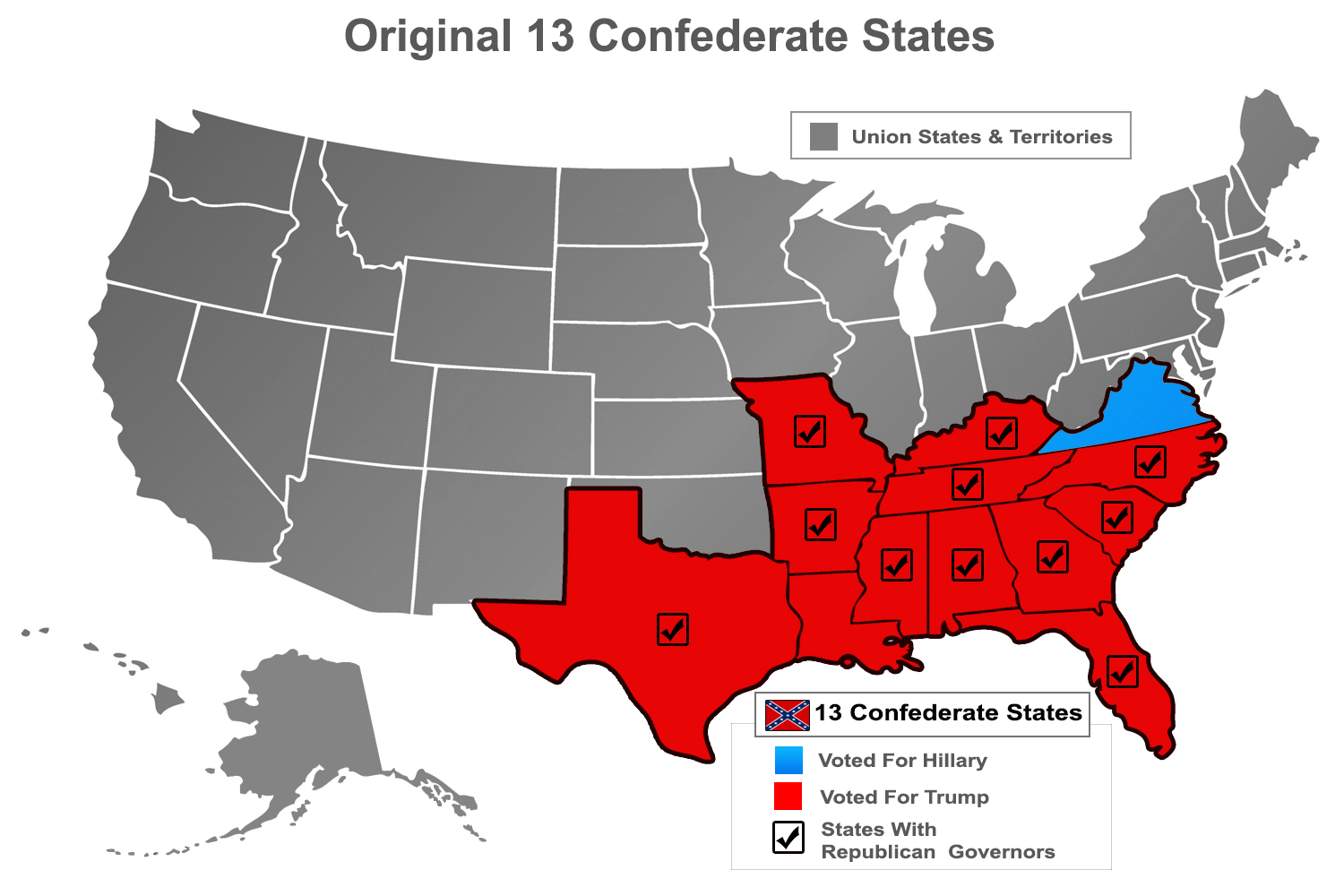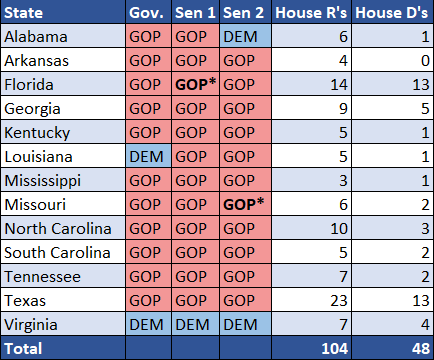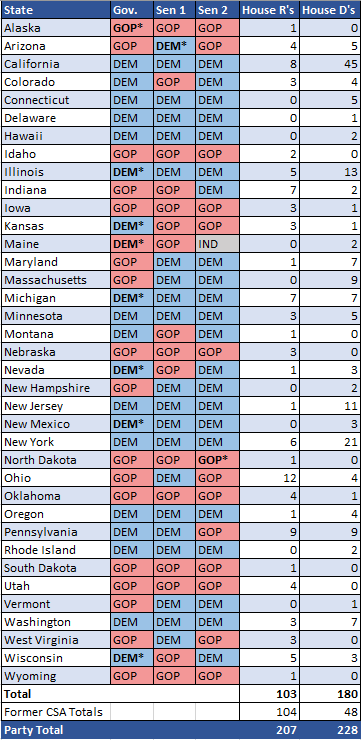
By Carsten Reisinger @ Shutterstock.com
11/20/2018: Updated to reflect the results of the 2018 elections.
Despite the despicable and cruel element of slavery involved in the South’s secession, part of the reasoning was based in what the South felt was an abandonment of true federalism and states’ rights by the government of the United States.
States’ rights never supersede human rights, and therefore no viable claim of states’ rights can be made in a case in which slavery is protected by 10th amendment rules.

*The status of Kentucky and Missouri as “Confederate States” is disputed, but there are 13 stars on the Confederate flag, and they represent these thirteen states. Whether or not the states were under effective Confederate control or not is another matter to be reconciled by others.
In cases where civil liberties are being better protected by states and localities, local law should always outweigh that of the federal government. The structure of Swiss cantonal law is the best example of such a government at work. Read my series on The Swiss Way to get a better understanding of the freedom and equality enjoyed by the Swiss.
Perhaps a better example in American history of strict federalism at work was from March 1, 1781 to September 17, 1787, the time during which the Articles of Confederation ruled the country. The states adhering to those early rules, New Hampshire, Massachusetts Bay, Rhode Island, and Providence Plantations, Connecticut, New York, New Jersey, Pennsylvania, Delaware, Maryland, Virginia, North Carolina, South Carolina, and Georgia, had suffered under the rule of a tyrant and had endured war to rid themselves of foreign rule.
Today, all but one of the Confederate States of America voted for Donald Trump. With few exceptions, those states are led by Republican leaders.
Totals for Confederate States of America (CSA)
*Flip Seat
Here Are the Totals for Non-CSA States
*Flip Seat







